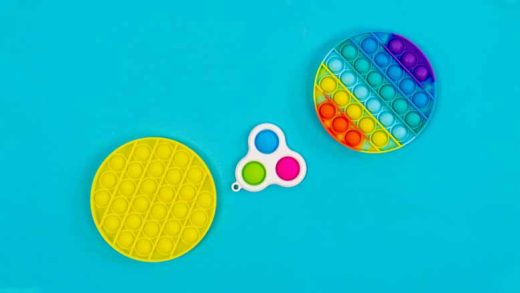The alphabetic principle plays a vital role in deciding how fast a child can learn to read and write. This principle is taught by isolating sounds and letters. Students are first taught the relationship between letters and sounds, and then they are taught how to decode words with it. Children need the alphabetic principle in order to read or write. These are the alphabetic principle activities that are used to assess a student’s ability to read and write.
But what is the alphabetic principle? It is the concept that letters represent sounds, and that those sounds can be used to spell or read words.
What is the Alphabetic Principle?
The Alphabetic principle is simply a child’s knowledge of how to connect letters and sounds to read or write a word. A child understands that the letter E says /ee/ and the letter A says /ae/ before they can read and write. There are two parts to this principle:
- Alphabetic Understanding
- Phonological Recording
This is a child’s understanding that words are made up of sounds, sounds are made up of letters, and letters are connected to specific sounds.
This is the application of alphabetic understanding in the ability to associate sounds with letters and therefore decode words.
Alphabetic Principle Examples
To further understand what is the alphabetic principle, let’s look at some of the alphabetic principle examples of the Alphabetic principle. A child who knows that the letter N makes the sound /nn/ is demonstrating the alphabetic principle. A child who understands that the letter V makes the sound /we/ can learn how to read and write faster than the other children who don’t demonstrate this understanding of sounds.
Are there words that don’t follow the alphabetic principle?
There are some exceptions to this rule. Children won’t be able to apply the alphabetic principle to read words like “said” and “meant.” These types of words are known as irregular words. They have to be learned thoroughly in order to be decoded. These are called sight words. They are common enough that children should know how to read them automatically without having to decode any part of the word.
Alphabetic Principle Activities
By incorporating activities focused on explicit phonics instruction into your lessons, you can make it easier for children to nurture the alphabetic principle! Here are some ideas for some fun ways to do that.
- Sound Drills
- Alphabetic Arc
- Use A Mirror
- Letter Name Drills
- Word Ladders
Sound drills are helpful for children to relate pictures and letters to sounds and increase phonological awareness. In these activities, teachers have to hold up cards with letters and pictures on them. Students then say the letter sound and name and associate each phonogram with an engaging keyword. It all takes less than 10 minutes!
Engage children in an alphabet arc challenge and help them learn the ABCs to perfection. The kids have to touch and say the alphabet as they touch the letters. This helps children correctly connect letters and letter names for different letters. After they say the letters from beginning to end, they start at differing places in the sequence.
The students won’t always have keyword pictures available to them but they will always have their mouths. Have kids look in a mirror when they are struggling with individual letters and sounds. If a child mistakes the letter “m” for “n”, you can observe how the child’s tongue is making different sounds and thus help the child in perfecting the sound.
Letter name drills are very similar to keyword letter drills. The only difference is that letter name drills are performed without any keyword pictures. These drills should be done on a daily basis!
Word ladders are an excellent way to help children develop an understanding of the relationship between letters and sounds. They also teach children how to manipulate sounds to create new words. Children start by writing down a given word. Then, they change just one letter in the word to create a new word. They write that new word on top of the original word. Children continue changing just one letter at a time to see how high their ladder can go. For younger readers, this activity is best done with short words. The longer the original word is, the more difficult this activity gets.
Applying The Alphabetic Principle With Decodable Texts
If children are able to blend sounds and read some words, delving into decodable texts is a great way to apply the alphabetic principle in action. With fewer irregular and unknown words, kids can perfect their skills while enjoying themselves.
When talking about helping children become confident and independent readers, explicit phonics instruction makes a huge difference for regular words.
Alphabetic Principle Strategies
There are certain alphabetic principle strategies to teach children the principles better
- Begin with introducing the concept of letters with representative sounds.
- Use visual aids like alphabet charts, and teach them the letter names and their corresponding sounds.
- Help children develop fluency by introducing high-frequency words and sight words.
- To ensure their mastery over the alphabetic principle, always monitor student progress.
The alphabetic principle: Instructions to follow
Here are some of the instructions that should be followed while teaching the children alphabetical principles.
- Teach letter-sound relationships in isolation
- Give opportunities to kids to practise letter-sound relationships on a daily basis
- Provide children with opportunities to practise
- Give children opportunities early and often to apply their knowledge of sound-letter relationships to the reading and writing of words
Teaching the alphabetic principle is essential to helping children become confident readers. It’s important to introduce new concepts slowly and steadily and to make sure that children are practising with a variety of materials and in different ways. They must also be taught irregular words to turn them into completely independent readers.
At Kangaroo Kids International Preschool, we help children develop holistically, besides nurturing their academic skills. To learn more about our curriculum, connect with us today!









